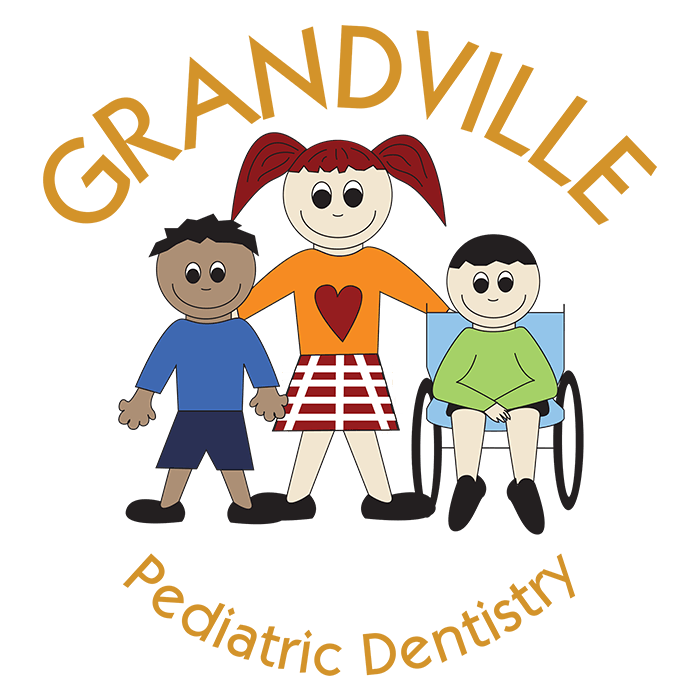What to Expect With Pediatric Dental Crowns

If your child has a decayed or , our Grandville pediatric dentists may recommend that a dental crown be placed over top. While it may seem silly to use a crown on a tooth that’s not permanent, it’s beneficial for your child’s oral health. Just as you might receive one for extra smile protection, so can they.
Here’s what there is to know about the main types of pediatric dental crowns, the procedure, and a way you can help your child prevent cavities.
Why Crowns Are Useful (Even for Baby Teeth)
Every parent wants their child to have healthy teeth that are free of decay. Yet, that doesn’t stop the initial thought many have when they hear a dental crown is needed. It’s only a baby tooth, can’t it just be extracted or left alone?
To put it simply, no, because damaged teeth require protection. Though they are eventually replaced by permanent teeth, baby teeth are important. They help your child to speak properly, eat comfortably, and serve as placeholders for adult teeth. Without them, your child’s life would involve some obstacles that otherwise wouldn’t exist, such as the inability to pronounce certain words or the lack of a nutritious diet.
Learn More → Are Baby Teeth Really That Important?
If a decayed tooth is not treated, it could compromise other surrounding teeth and spread rapidly. This is due to the thin enamel of baby teeth. On the other hand, if the tooth is prematurely removed, neighboring teeth will want to fill the space and crowding can occur. Space maintainers aside, dental crowns are the most durable solution for your child.
Popular Types of Pediatric Crowns
Crowns intended for the repair and restoration of primary teeth differ slightly in terms of materials used but function the same as adult crowns. They consist of a tooth-shaped “cap” that covers a vulnerable tooth, thus restoring its strength.
Where your child’s decayed or injured tooth is located does sometimes affect the type of crown chosen. If the tooth is in the back of the mouth, a less aesthetic option, like stainless steel crowns, are preferable. But, if the tooth is front facing, you may want a white dental crown as it will look more natural.
1. Stainless Steel Crowns
One type of pediatric crown that we offer at our Grandville pediatric dental office is made of stainless steel. have been used in pediatric dentistry for several decades and are regarded as a trusted option. The crown itself is a metal shell that is easily placed and can be customized to fit any tooth.
A few other benefits of stainless steel crowns include:
- Their durability, strength, and resistance to moisture (perfect for back molars)
- They’re cost-effective and are the most affordable crown option available
- They generally only require one visit to our pediatric dentists
Stainless steel crowns have been used for so long because they are highly safe for children’s smiles. They are made from a high-quality, non-reactive material that is biocompatible, meaning it won’t cause any adverse reactions in the body. In fact, allergic reactions to stainless steel crowns are extremely rare.
2. White Crowns
Unlike stainless steel crowns, white crowns closely resemble those made of porcelain. This tooth-colored option is often recommended for damaged teeth where a more aesthetically pleasing solution is desired. While our pediatric dentists don’t outright offer white ceramic crowns for anterior (front) teeth, we do use white composite crowns which are also effective and affordable.
At times, we may also use white ceramic coated crowns for primary teeth that are deemed suitable candidates for that type of restoration. Essentially, these crowns are pre-formed and can’t be bent or custom fitted to any tooth. Because of this, not every tooth will qualify, but our pediatric dentists will let you know if one is appropriate for your child.
White crowns are also:
- Stronger and more durable than natural enamel
- Resistant to plaque accumulation and decay
- Not capable of producing an allergic response when introduced to biological tissue
The Dental Crown Procedure
Most can be placed in a single visit, unlike their adult equivalents. Our pediatric dentists will start by numbing the area around the tooth and the tooth itself. Let us know if your child is more anxious at the dentist as we can also offer dental sedation at this stage to help them relax.
Related Post → 3 Comfort Methods We Provide for Your Child
Once everything is properly numb, a dental dam will be placed to isolate the tooth being worked on. This small piece of latex also protects your child’s cheeks, tongue, and gums. Continuing the procedure, our dentists will remove any decay present and shape the tooth for the crown using a special drill.
Lastly, the crown is placed and checked to make sure it fits properly.
Have Sealants Applied to Fight Cavities
You can help prevent tooth decay on back teeth with dental sealants. Sealants are thin coatings that can be painted or brushed onto the chewing surface of your child’s molars.
On the top of these back teeth, there are narrow fissures and pits. Sealants act as a protective shield and prevent plaque from hiding inside these hard-to-brush grooves. If you’re interested in this quick, painless procedure for your child, ask and our dentists can apply them no problem.
Restore Your Child’s Smile With a Crown
Baby teeth are often overlooked but when damaged, they require protection just as much as an adult tooth would. Dental crowns placed by our pediatric dentists in Grandville, MI, work to restore needed strength and functionality. Request an appointment for your child today online or call Grandville Pediatric Dentistry at (616) 531-3430.
This blog post has been updated.

